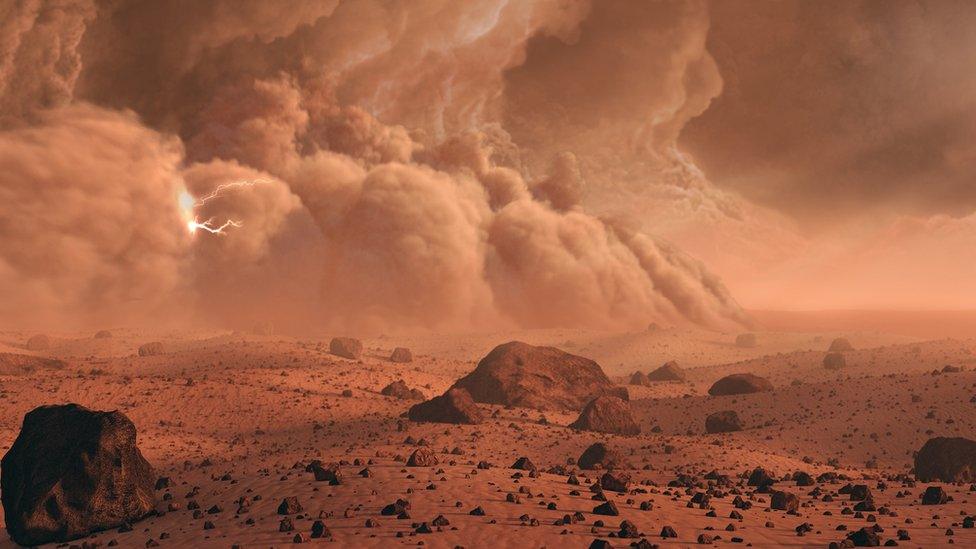Did Mars once have seasons like Earth?
- Published
- comments

Mars is the fourth planet in our Solar System
Scientists think Mars and Earth may be a lot more similar than we originally thought.
If you think about what Mars is like now you may picture a dry and dusty planet but scientists now believe that the red planet may once have had a wet and dry seasons billions of years ago.
Fossils found on the planet back up the theory and experts believe about three billion years ago the planet had seasons very similar to Earth.
The wet and dry seasons could have provided good conditions, and vital ingredients, that would have been required for life to form.
Mars is also known as the 'Red Planet' because it has lots of iron oxide on its surface giving it that rusty red colour
For this study, which was published in the scientific journal Nature, researchers looked at data from Nasa's Curiosity rover which landed on Mars back in 2012.
The team said that, unlike Earth, Mars has huge areas of well-preserved terrain with abundant fossil rivers and lakes dating back billions of years.
Earth, on the other hand, has tectonic plates - large slabs of rock dividing the planet's crust and moving constantly to reshape its landscape.
Our findings point to a sustained, cyclic, possibly seasonal, climate on early Mars
Scientists for this study analysed salt deposits found in a lake bed called the Gale Crater which are thought to be between 3.6 and 3.8 billion years old and they say these suggest that the red planet had a cyclical climate more than three billion years ago.
Mars is cold and inhospitable but evidence suggests it may have once had liquid water - a necessary ingredient of life - and a thick atmosphere.
But over billions of years, the planet lost much of its atmosphere, transforming its climate from one that might have supported life into the dry and frozen environment of today.
